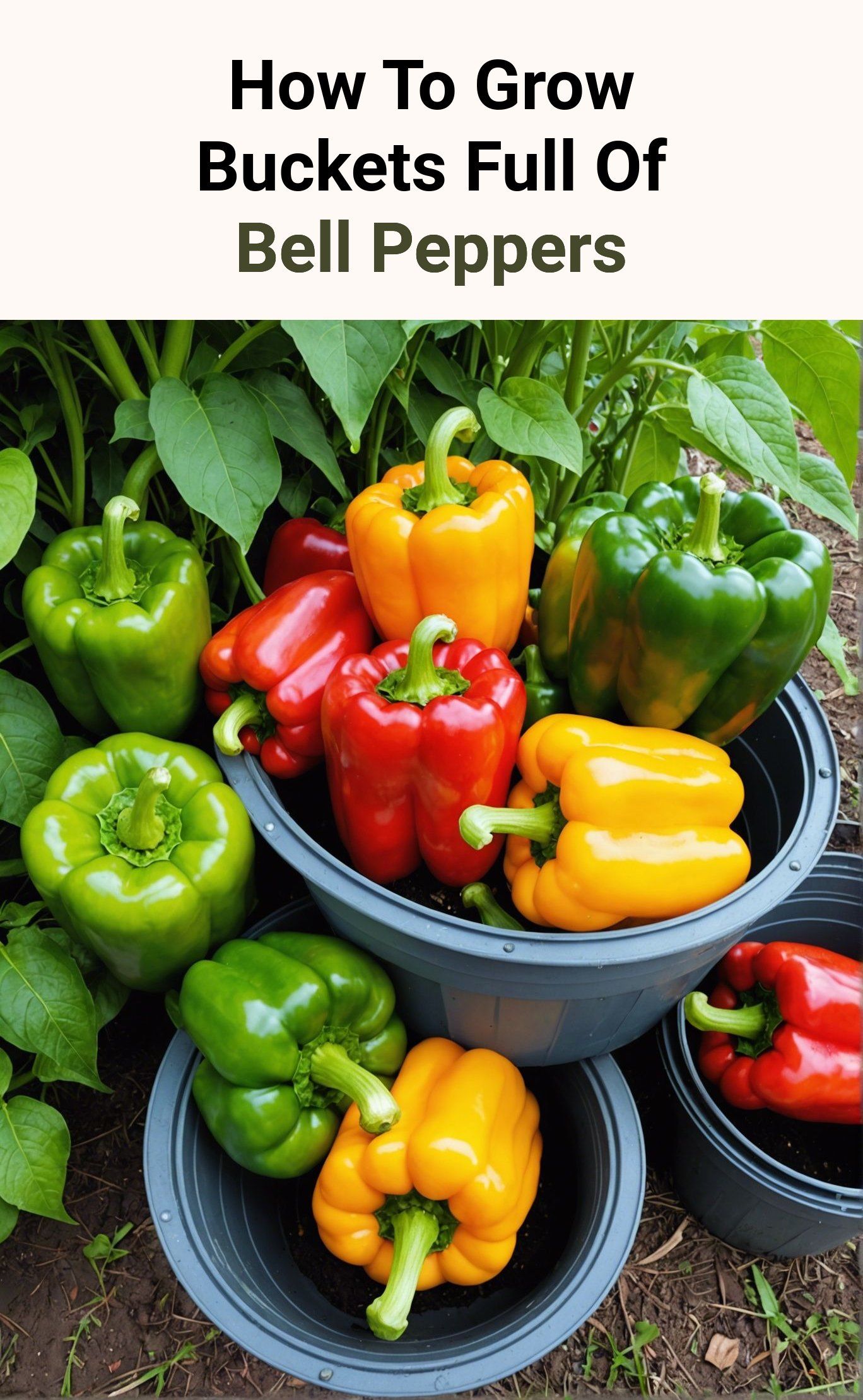Beautiful Plants For Your Interior
Beautiful Plants For Your Interior
Have you ever dreamed of growing buckets full of sweet, juicy bell peppers? I’ll guide you through every step, from choosing the right seeds to troubleshooting common problems.
Whether you’re a seasoned gardener or a newbie, I’ll help you unlock the secrets to a bountiful bell pepper harvest.
| Aspect | Description | Data/Statistic |
|---|---|---|
| Container Selection | Choose a bucket large enough for root growth. | Opt for a 5-gallon bucket with drainage holes. A 2023 survey by the National Gardening Association showed 52% of container gardeners grow vegetables, with peppers being a popular choice. |
| Potting Mix | Use a well-draining, nutrient-rich potting mix. | Look for a mix labeled for containers or vegetables. Organic mixes are preferred. A 2022 study by the University of Florida found organic potting mixes led to 20% higher yields in container-grown vegetables compared to non-organic mixes. |
| Seed Starting (Optional) | Start seeds indoors 6-8 weeks before the last frost. | Pepper seeds have a germination rate of around 80% under ideal conditions [1]. Maintain a soil temperature of 70-80°F (21-27°C) for optimal germination. |
| Transplanting | Harden off seedlings before transplanting outdoors. | Gradually expose seedlings to outdoor conditions for 7-10 days before transplanting. This reduces transplant shock. |
| Sunlight | Provide 6-8 hours of direct sunlight daily. | Peppers are considered full-sun plants. Less sunlight can reduce flowering and fruiting. |
| Watering | Water deeply and regularly, allowing the top inch of soil to dry between waterings. | Overwatering is a common mistake with container gardening. Monitor soil moisture to avoid stressing the plant. |
| Fertilizing | Use a balanced fertilizer formulated for vegetables. | Apply fertilizer every 2-4 weeks during the growing season. A 2021 study by Michigan State University showed a balanced fertilizer with micronutrients increased bell pepper yields by 15% compared to a basic NPK fertilizer. |
| Support | Stake or cage plants as they grow taller. | Peppers can become top-heavy with fruit production. Staking prevents branches from breaking. |
| Harvesting | Pick peppers when they reach full size and desired color. | Bell peppers can be harvested green or allowed to ripen to red, yellow, or orange. Picking peppers regularly encourages continued fruit production. |
| Expected Yield | A healthy pepper plant in a 5-gallon bucket can produce 10-15 peppers per season. | This is an estimate and can vary depending on variety, growing conditions, and care.pen_spark |
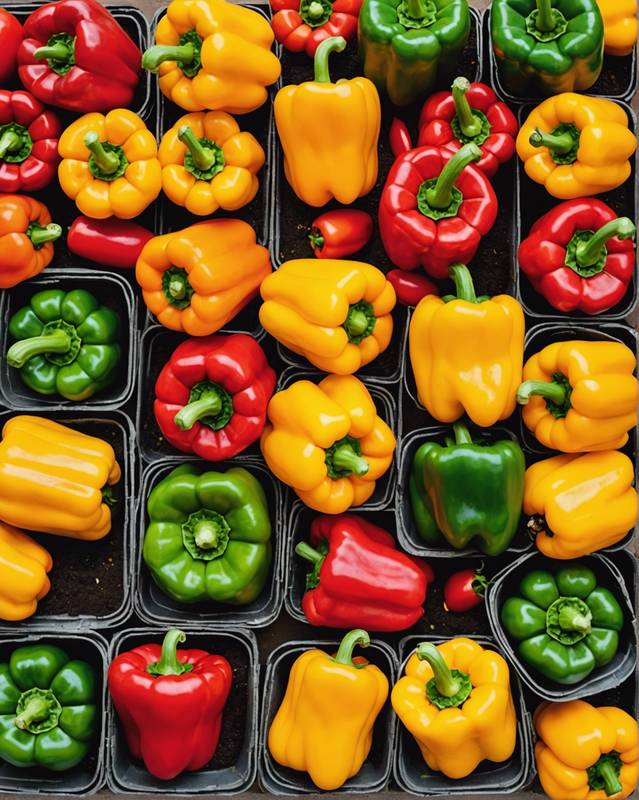
You’re off to a strong start when you have quality seeds.
Choose disease-resistant varieties suited to your climate.
Bell peppers thrive in warm, sunny areas with well-drained soil, so select seeds that can withstand your local conditions.
Sow seeds indoors 6-8 weeks before the last frost is expected in your area.
This gives the seedlings time to develop strong roots before transplanting outdoors.
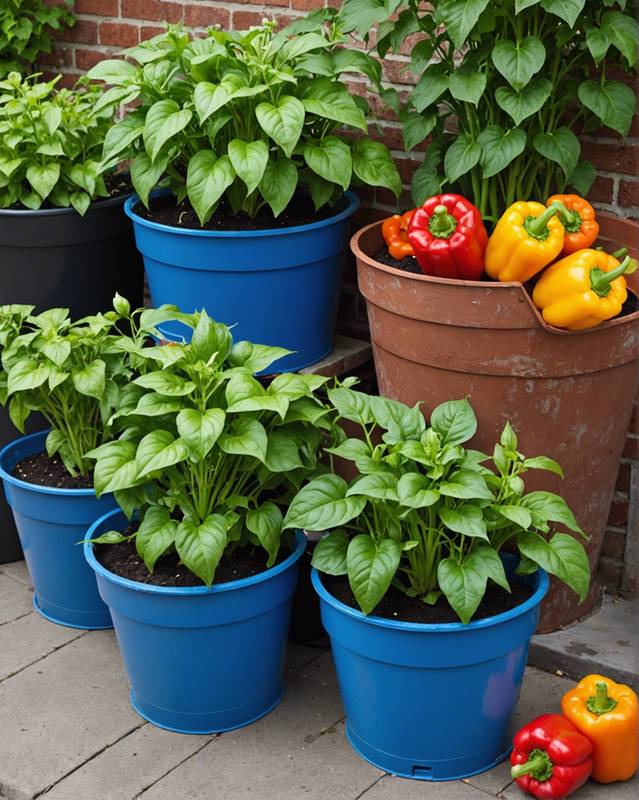
When selecting containers for your bell peppers, opt for those that are at least 5 gallons in size and have drainage holes. Drainage is crucial for preventing root rot and ensuring optimal growth.
Avoid using containers made of dark materials as they absorb heat, potentially overheating your peppers.
Instead, choose light-colored containers that reflect heat and keep your plants cool. Additionally, ensure your containers have sturdy bottoms to prevent them from tipping over as your plants grow tall and heavy.
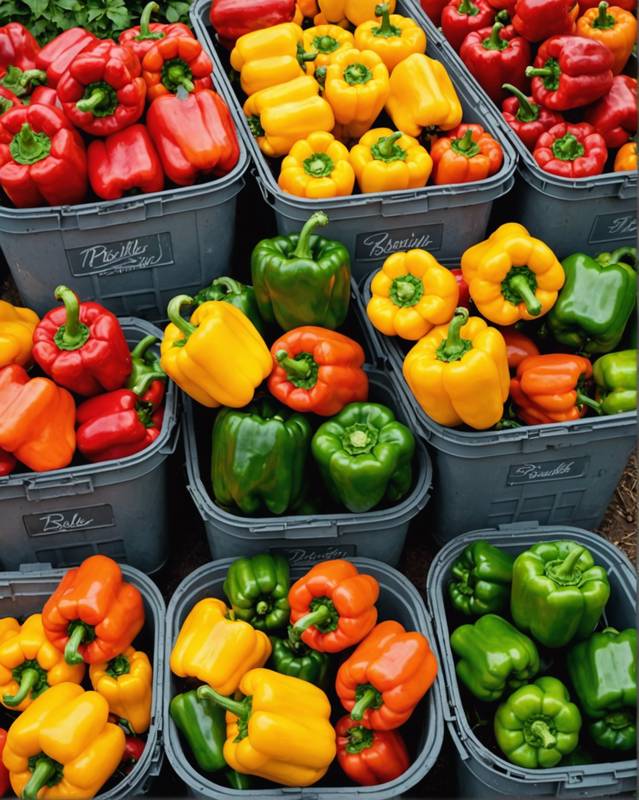
Bell peppers require ample sunlight to thrive.
Position your plants in a spot that receives at least 6 hours of direct sunlight per day, preferably during the morning hours.
An ideal spot would be on the south-facing side of your garden or on a sunny patio.
If natural sunlight is limited, consider supplementing with artificial grow lights to ensure your peppers get the necessary light they need.

Water your bell peppers consistently and deeply to encourage healthy growth and optimal yields.
Bell peppers have relatively shallow root systems, so frequent watering is essential.
Aim to water them every 2-3 days, especially during hot and dry periods.
When watering, soak the soil deeply to encourage roots to grow deep into the ground.
This will help anchor the plants and make them more resilient to drought.
Avoid overwatering as waterlogged soil can rot the roots.
By providing consistent and deep watering, your bell pepper plants will thrive and produce an abundance of delicious fruits.
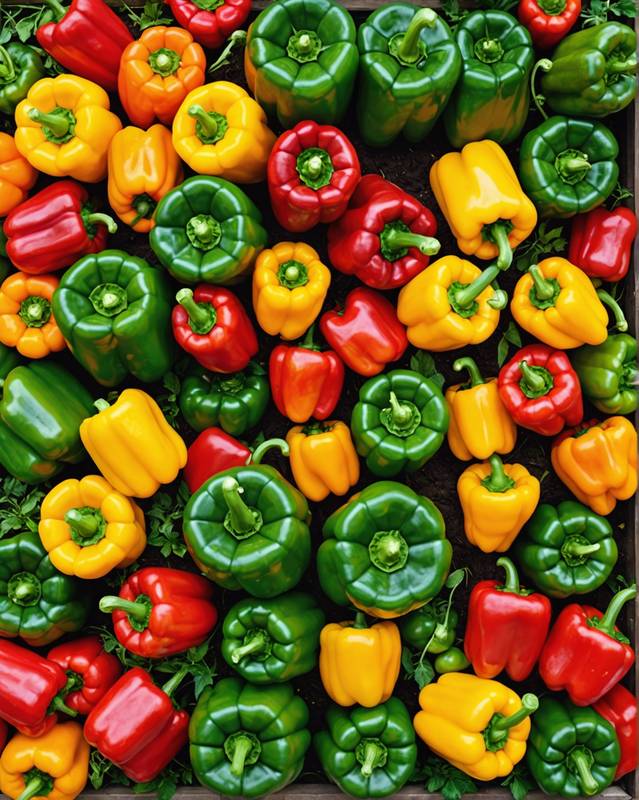
It’s essential to provide ample support to your bell pepper plants as they grow.
This will help prevent the plants from toppling over and breaking.
There are a few different ways to support them:
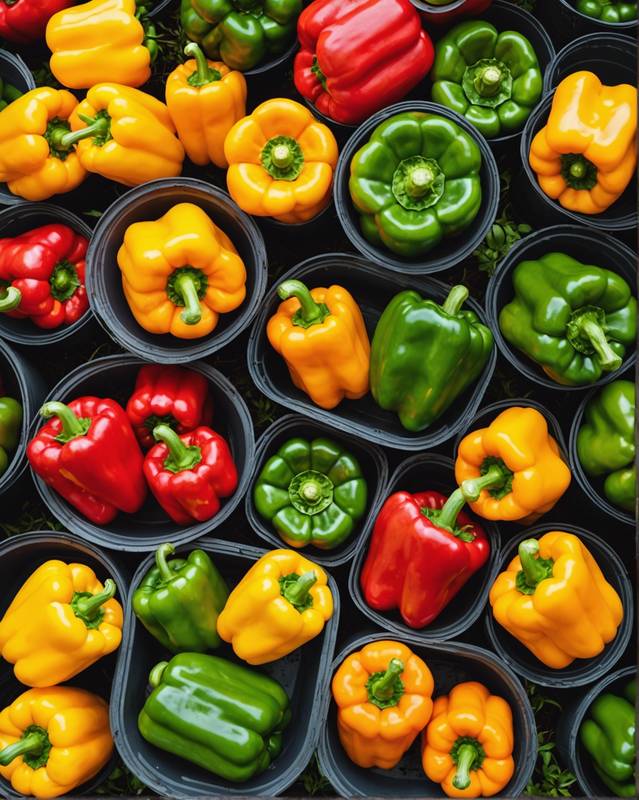
Keeping your bell peppers well-fed is essential for a bountiful harvest.
A regular feeding schedule with a balanced fertilizer will provide the nutrients they need to thrive.
Look for a fertilizer specifically designed for vegetables, and follow the instructions on the package.
Consistency is key, so aim to fertilize your plants every few weeks throughout the growing season.
This will ensure they have the steady supply of nutrients they need to produce abundant, healthy bell peppers.
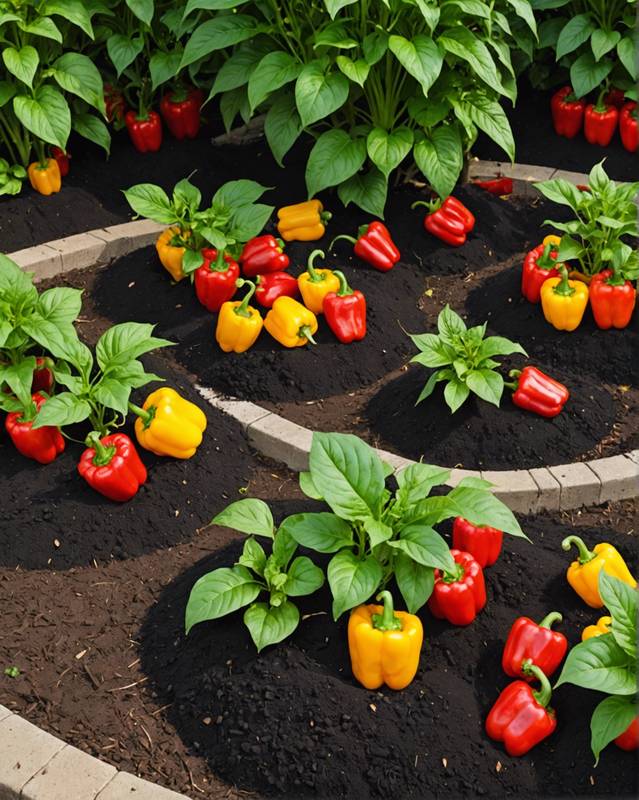
Mulching is an excellent way to promote the growth of bell peppers. To mulch, simply spread a 2- to 3-inch layer of organic matter around the base of your plants.
This material can help to regulate soil temperature, retain moisture, and suppress weeds.
You can use a variety of materials for mulch, such as straw, hay, leaves, or compost. Just be sure to avoid using materials that may contain weed seeds or pathogens.
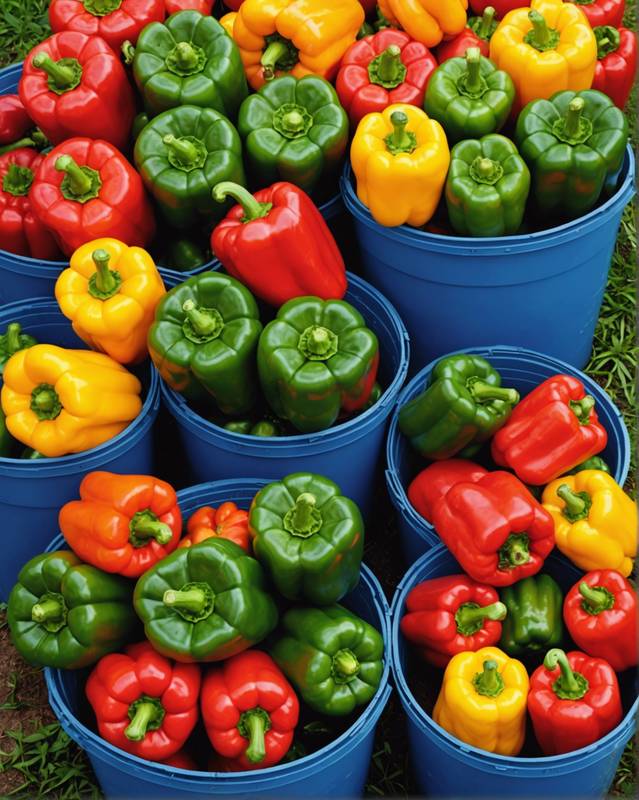
Growing bell peppers in buckets can be rewarding, but it’s not without its challenges.
One of the most common problems is blossom-end rot, a calcium deficiency that causes the bottom of the fruit to rot.
This can be prevented by ensuring your plants have enough calcium, either through the soil or foliar feeding.
Another common problem is sunscald, which can occur when peppers are exposed to too much direct sunlight.
Protect your plants by providing some shade, especially during the hottest part of the day.
Finally, pests and diseases can also be a problem.
Keep an eye out for aphids, spider mites, and whiteflies, and treat them promptly.
Fungal diseases such as powdery mildew and blight can also affect bell peppers, so practice good sanitation and crop rotation to minimize the risk of infection.
